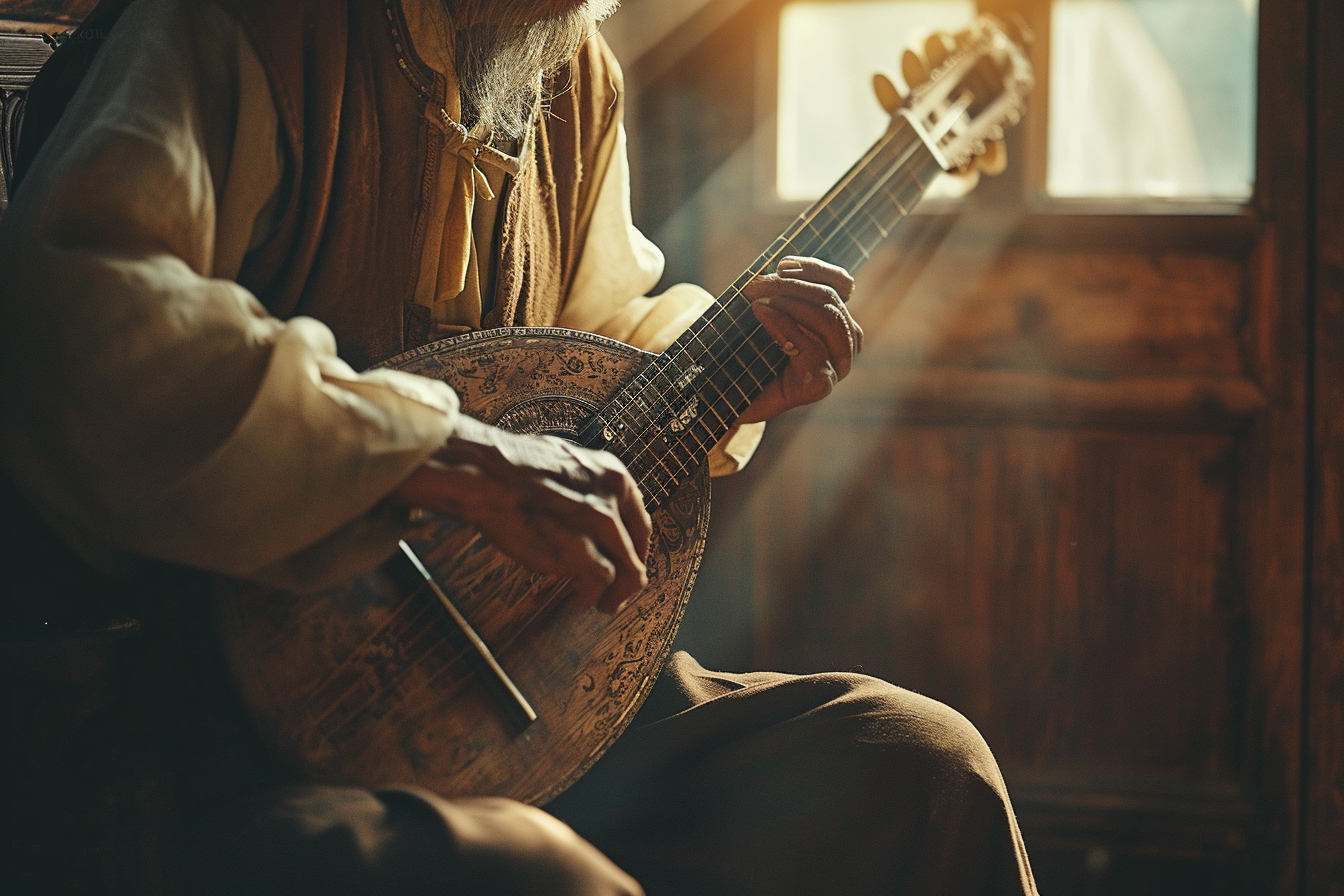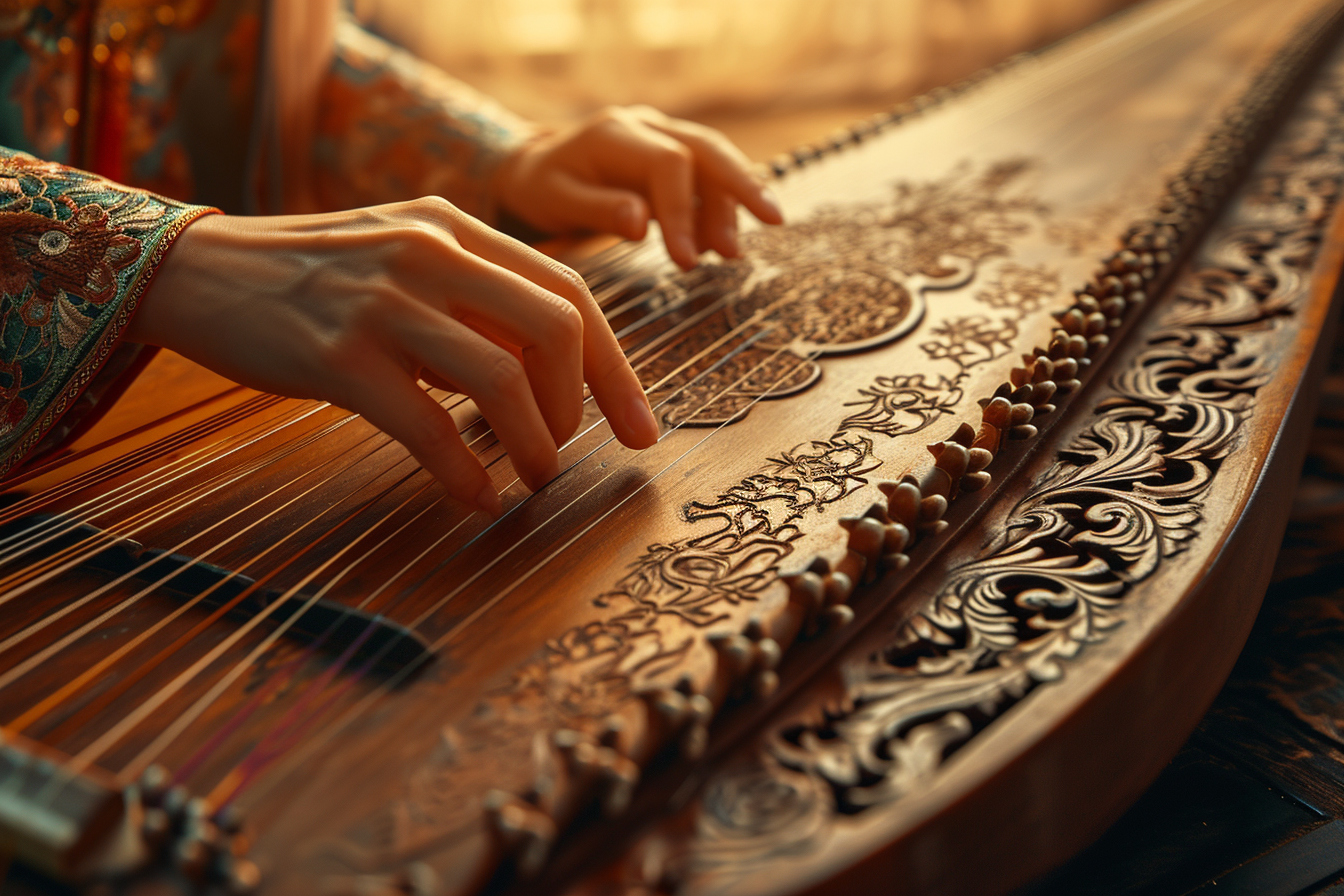The Pipa, often dubbed the Chinese lute, embodies a cultural symbol with a rich history spanning over two thousand years. As a staple in both traditional and modern Chinese music, the Pipa’s enchanting tones resonate with an ever-growing audience. Mastering this storied instrument requires not only dexterity and cultural understanding but also begins with selecting the right Pipa. To aid novices and seasoned players alike, we delve into the multifaceted aspects critical to choosing the ideal Pipa.
Understanding the pipa’s historical significance
Before embarking on the journey of selection, it is instrumental to acknowledge the profound heritage of the Pipa. Emerging during the Han Dynasty, the Pipa has a storied evolution, mirroring the dynamic changes in Chinese society and culture. Bearing a teardrop-shaped wooden body and a distinct number of frets, this plucked instrument offers an array of tonal intricacies. The player often holds the Pipa vertically, manipulating the strings with deft finger-plucking techniques to produce its unique sound.
Construction and materials: the foundation of tone
Wood quality and resonance
The Pipa’s sound quality hinges on its construction—where materials used play a pivotal role. Traditional Pipa instruments predominantly utilize woods such as red sandalwood, rosewood, and paulownia for the soundboard. Each wood type imparts distinct acoustic properties. For instance:
- Red Sandalwood: Known for its density and durability, red sandalwood provides a rich, warm timbre, making it a sought-after choice for professional performers.
- Rosewood: Offering a balance between warmth and brightness, rosewood is revered for its versatile sonic character.
- Paulownia Wood: Lightweight yet resonant, paulownia delivers a focus in the higher frequencies, yielding a clear and articulate sound, favorable for intricate melodic lines.
When selecting a Pipa, closely examine the wood’s grain and age, as these factors can significantly impact resonance and sustain.
Craftsmanship and build quality
The sound and longevity of a Pipa are also contingent on its craftsmanship. A well-crafted Pipa should exhibit meticulous joinery, a smooth finish, and properly installed frets that enhance playability. Inspecting the precision of inlay work, particularly around the sound hole and fretboard, can reveal the attention to detail invested in the instrument.
High-quality Pipas are often handcrafted, with artisans imbuing years of tradition into their design. Conversely, mass-produced instruments may sacrifice certain nuances in sound for affordability. It is crucial to balance the virtues of artisanal craftsmanship against the practicalities of budget and personal preference.
The importance of frets and tuning pegs

Fret configuration
The Pipa boasts a distinctive fret arrangement which can vary between instruments. Standard Pipas typically have 24 frets, while some concert-level models extend to 26 or more. More frets accommodate a broader range of notes and potentially more advanced repertoire.
It is worth noting that the height and material of the frets influence the playing experience. Higher frets support the bending of strings—a vital technique in Pipa music, while fret materials like bamboo, wood, or cow bone can offer different tactile feedback and tonal characteristics.
Tuning pegs stability and ease of use
Reliable tuning pegs are indispensable for precise intonation. The Pipa employs a traditional tuning system with pegs secured into drilled holes in the headstock. The chosen tuning pegs should operate smoothly, holding the strings in tune without slippage. The material of the pegs, often ebony or synthetic substitutes, contributes to the overall aesthetics while serving a functional purpose.
Size and comfort: ergonomics in practice
Sizing it up
Pipas are not one-size-fits-all; varying in size, they should fit the player’s physique to ensure comfort during performance. A Pipa that is too large may create strain on the arms and shoulders, while one too small could limit expressive capabilities. Beginners should consider a Pipa that allows for relaxed posture and smooth access to all frets and strings.
Custom adjustments
To optimize playability, some players may seek additional customization. This could involve adjusting string action, fret height, and neck width to accommodate personal technique and hand size. Custom tailoring is particularly recommended for professionals or those with specific ergonomic needs.
Tone and playability: the player’s preference
Identifying the desired sound
The sound ideal for a Pipa varies among players, dictated by genre preference, performance context, and personal taste. Some players favor a brilliant, piercing tone for its projection in solo performances, while others may opt for a mellow sound that blends seamlessly in ensembles. Assessing the Pipa’s dynamic range and responsiveness is key, whether it’s during poignant, quiet passages or in the midst of vigorous strumming.
Accentuating the prodigy’s playability
Beyond tone, the ease with which one can coax music from the instrument is of utmost importance. Actions such as plucking, bending strings, or executing rapid vibratos should feel natural and effortless. A Pipa that ‘fights back’ against the player’s intentions can hinder progress and reduce the joy of playing.
Budget and brand reputation
Pricing: an investment in quality
Pipas are available across a broad price range, reflecting variances in quality and craftsmanship. While affordability is a practical consideration, investing in a higher-quality Pipa may lead to better sound and improved resilience against wear and tear. It is advisable to consider the Pipa not just as a purchase, but as an investment in one’s musical journey.
Reputable brands and makers
Purchasing a Pipa from a trusted brand or esteemed maker can often assure quality and a baseline level of craftsmanship. Renowned luthiers carry a reputation for their commitment to excellence, and their instruments frequently hold value better over time. Seek out recommendations from experienced players, educators, or forums dedicated to Pipa and Chinese music.
Assessing needs and goals

Defining artistic aspirations
Your choice should align with your artistic goals, whether that be performing traditional works, exploring contemporary pieces, or composing new music. Evaluate the genres you aim to play and consider how the Pipa’s characteristics can cater to these styles.
Future-Proofing your selection
An instrument is not merely a tool for the present—it is a companion for your future growth. Selecting a Pipa with the potential to meet your evolving skills ensures a lasting and fulfilling relationship with your instrument.
The trial process: a crucial step
Testing before purchasing
Testing multiple Pipas is indispensable before making a commitment. Engage with each instrument—feel its weight, assess its balance, and listen carefully to the nuances in its sound. Only through direct interaction can you ascertain the instrument’s character and how it syncs with your musical voice.
Seeking professional guidance
For those less experienced in the nuances of Pipa selection, consulting with a professional or teacher can be invaluable. Their expertise and objective ear can support you in discerning the subtle differences that may escape an untrained listener.
Sustainability and ethical considerations
Responsible material sourcing
With growing concern for the environment and sustainability, the provenance of the materials used in constructing a Pipa can hold significant weight in the selection process. Ethically sourced woods and components ensure that your musical pursuit aligns with ecological responsibility.
Social responsibility
Choosing a Pipa from a maker that adheres to fair labor practices has the added benefit of supporting ethical craftsmanship. This consciousness regarding your instrument’s backstory not only satisfies moral standards but also uplifts the broader cultural and musical community.
In the realm of Pipa selection, every detail—from wood quality to ergonomics, brand reputation to environmental considerations—plays an intricate part in shaping the journey ahead. The path to mastering the Pipa is not only one of practice and skill but of communion with an instrument that echoes your intentions and aspirations. As you pursue the quest for the right Pipa, let your senses, values, and ambitions guide you, knowing that the bond formed with your chosen instrument will become a defining feature of your musical expression.

Leave a Reply